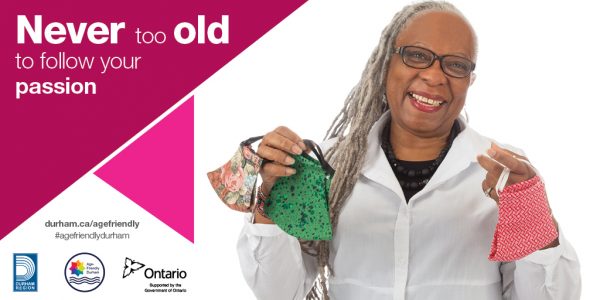The Beauty of Experience Anti-Ageism Campaign



In consultation with older adults during the Age-Friendly Durham planning process, it was revealed that ageism negatively impacts feelings of social inclusion and safety in the community. Inspired by this feedback, the Region of Durham and the Durham Council on Aging launched the Beauty of Experience Campaign to combat widely accepted myths and negative stereotypes of older adults.
This initiative was funded by the province of Ontario. The campaign featured stories of 24 older adults across our 8 area municipalities who endorse continuous learning, creativity, volunteerism and employment participation. These diverse stories were featured in a poster series and educational video and disseminated throughout local newspaper, radio, and Durham Region Transit advertising, and Durham Region’s Twitter, LinkedIn, and Facebook platforms. Social media posts were informational and debunked aging myths to educate the community about the aging experience.
Campaign messaging illustrated positive attributes of aging including wisdom, experience, and skills. Importantly, it reached community members of all ages, fostering communal understanding of the diverse realities of aging, and promoted social inclusion and increased safety for older adults in Durham. It was a positive experience for participants and provided a sense of social connectedness that was missing through the global pandemic.
Website: https://www.durham.ca/agefriendly
Main target group: Older people in general
Sector(s): Education, Information and communication
Other sector(s): Respect and Social Inclusion, Social Participation, Civic Participation and Employment
Desired outcome for older people:
Build and maintain relationships